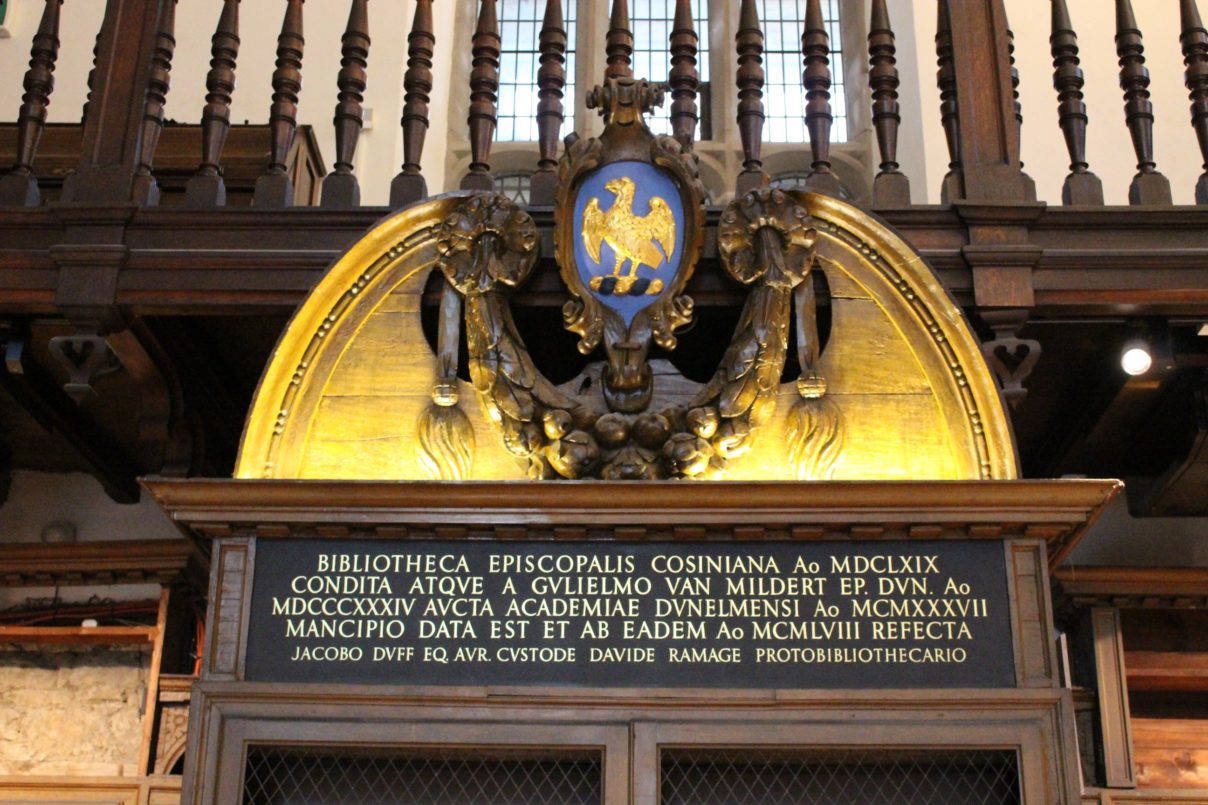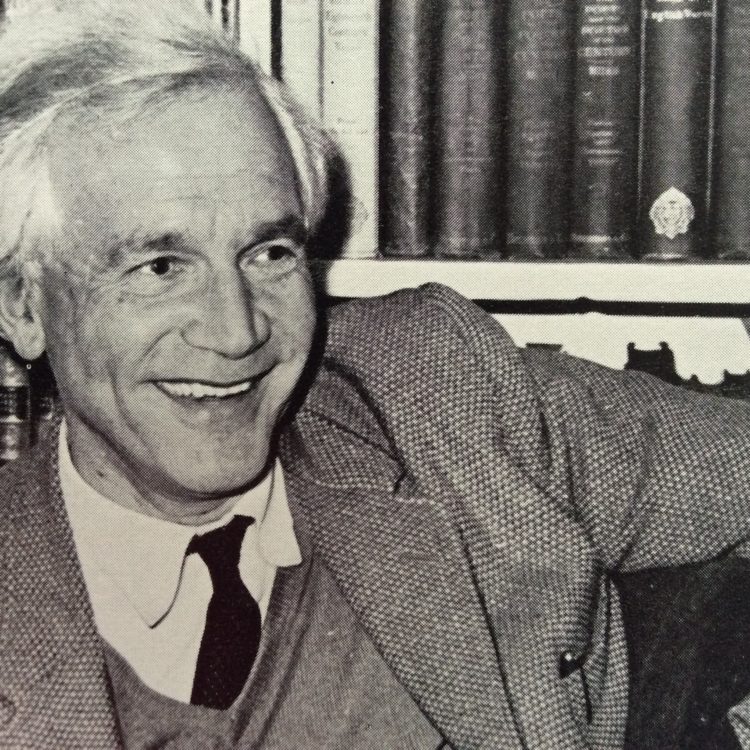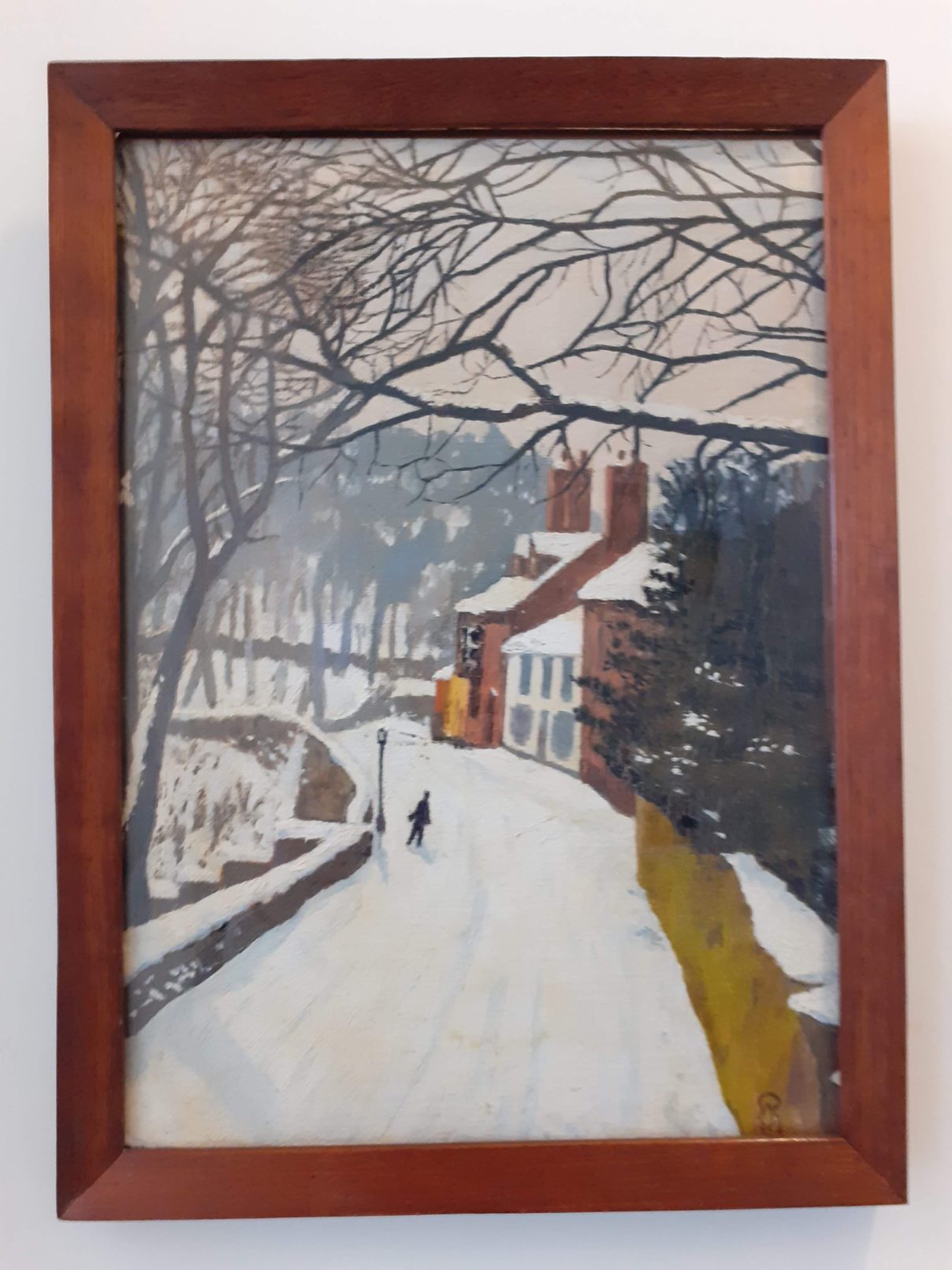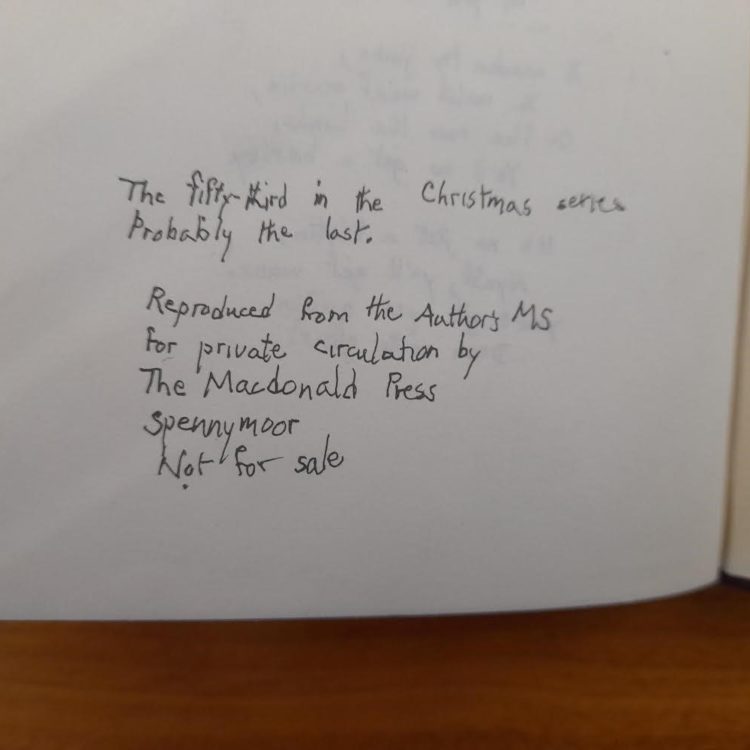David Ramage: Librarian, Painter, and Poet
Intrigued by David Ramage’s contributions to the mid-twentieth century restoration of Cosin’s Library, Christine Purcell and Ian Bower, two of our Cosin project volunteers, delved into our archives and spoke to people who knew Ramage to learn more about him and his passion for painting and poetry.

David Ramage, Durham University Librarian from 1945 to 1967 surely never expected to see his name Latinised and set out in gold. Yet here he is, commemorated alongside James Duff, Warden of the University, in an inscription marking the refurbishment of Cosin’s Library in 1958. The opening day marked the culmination of years of complex negotiations, difficult committee meetings, and determined fundraising. It was probably the most tangible achievement of Ramage’s distinguished career. Yet there was much more to the man than the librarian, and some delving into the archives, and conversations with some who worked alongside him has provided a a much broader picture of David Ramage – artist, gardener, traveller, scout leader and poet.

Ramage was born in Edinburgh and after a degree in English Literature and Language from Edinburgh University, he embarked on a career in libraries. He came to Durham in 1930 as Deputy Librarian and moved to St Andrews in 1936 to take up the Deputy role there. After the war, Ramage returned to Durham as University Librarian, a job he held until retirement in 1967. Despite lifelong problems with sight and hearing he flourished in his career both locally and nationally, working with colleagues around the country to establish professional networks. The inclusion of Durham University Library holdings in the English Short Title Catalogue helped to promote the Special Collections in his keeping.
Outside work, Ramage pursued many interests. Inspired by the painted roundels in Cosin’s Library, he created 9 smaller scale portraits to decorate Little Cosin, the room leading to Cosin’s Library. The men (all men) portrayed were illustrative of great achievements in Law, Literature and Science. These modern portraits were moved from Little Cosin when the library was prepared for conservation work.
Ramage also painted at least two portraits of University colleagues and a self-portrait from 1956. These are now all held in Durham University’s art collection. As well as portraits, he painted scenes around Durham, including this view of Pimlico, near his South Street home and given as a gift to friends.


Ramage enjoyed gardening, both in the large garden behind his South Street house and at his second home in Moniaive, Dumfriesshire. He was keen on Alpine plants and as his eyesight deteriorated he relied on touch and scent. He was a Scout leader and published an article on knots in The Scouter in 1959. He had a lifelong interest in Greece, both ancient and modern, and was a frequent visitor to that country. And alongside all this, Ramage was a writer, raconteur and poet – colleagues and friends recall his excellent memory and verse recitals, and how he would send out an annual Christmas poem. Fortunately a set of his collected poems has been preserved and can be read in the Barker Research Library at Palace Green Library.
Ramage’s failing eyesight and hearing led to his early retirement in 1967. He was succeeded by his deputy Agnes Macaulay who had been a great support to him as a colleague and who continued to offer him support in his retirement. Every Friday lunchtime she went with him to Marks and Spencer in Silver Street for his weekly food shop. Despite her busy work life she always made room in her diary for this act of kindness.

David Ramage died in Dumfriesshire in 1986. He had foreseen his death in his 1985 Christmas poem, noting that it would be ‘probably the last’.
His legacy lives on in the professional developments he contributed to during his career, in the art works he left, in the memories of former colleagues, and of course in the magnificently restored surroundings of Cosin’s Library.
